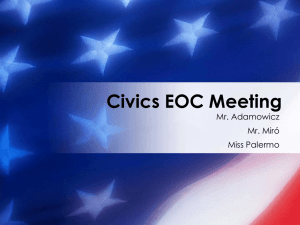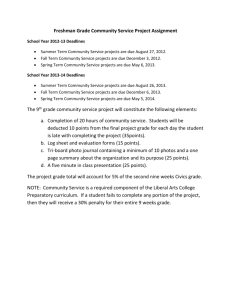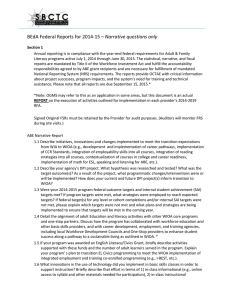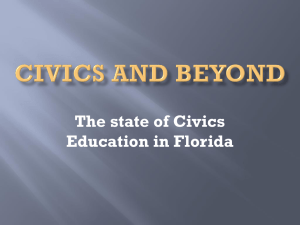WIOA Major Guiding Changes and Perf.
advertisement
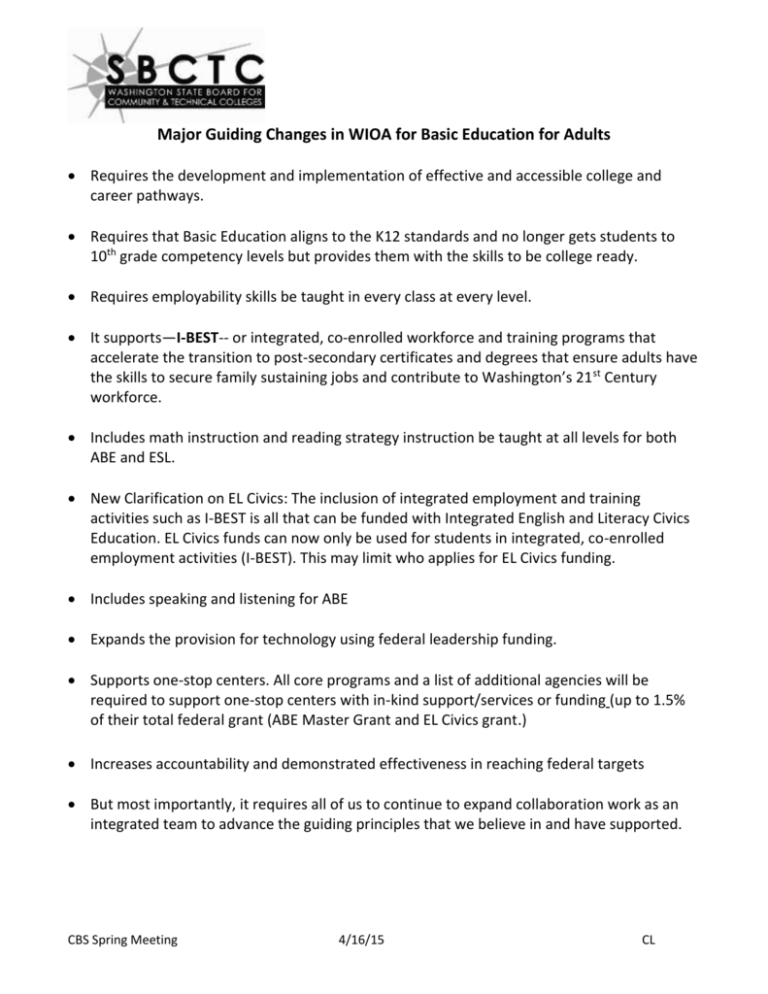
Major Guiding Changes in WIOA for Basic Education for Adults Requires the development and implementation of effective and accessible college and career pathways. Requires that Basic Education aligns to the K12 standards and no longer gets students to 10th grade competency levels but provides them with the skills to be college ready. Requires employability skills be taught in every class at every level. It supports—I-BEST-- or integrated, co-enrolled workforce and training programs that accelerate the transition to post-secondary certificates and degrees that ensure adults have the skills to secure family sustaining jobs and contribute to Washington’s 21 st Century workforce. Includes math instruction and reading strategy instruction be taught at all levels for both ABE and ESL. New Clarification on EL Civics: The inclusion of integrated employment and training activities such as I-BEST is all that can be funded with Integrated English and Literacy Civics Education. EL Civics funds can now only be used for students in integrated, co-enrolled employment activities (I-BEST). This may limit who applies for EL Civics funding. Includes speaking and listening for ABE Expands the provision for technology using federal leadership funding. Supports one-stop centers. All core programs and a list of additional agencies will be required to support one-stop centers with in-kind support/services or funding (up to 1.5% of their total federal grant (ABE Master Grant and EL Civics grant.) Increases accountability and demonstrated effectiveness in reaching federal targets But most importantly, it requires all of us to continue to expand collaboration work as an integrated team to advance the guiding principles that we believe in and have supported. CBS Spring Meeting 4/16/15 CL In WIOA, there are no individual performance measures; only one set of performance measures for all core programs. This single set of metrics includes: The percent of program participants who are in unsubsidized employment during second quarter after exit. The percent of program participants who are in unsubsidized employment during fourth quarter after exit. The median earnings of participants who are in unsubsidized employment during second quarter after exit. The percent of participants who obtain a recognized postsecondary credential or a secondary diploma or its recognized equivalent during participation in or within 1 year of exit. The percent of participants who during the program year are in education or training that leads to a recognized postsecondary credential or employment and who are achieving measurable skill gains towards such a credential or employment. The indicators of effectiveness in serving employers. CBS Spring Meeting 4/16/15 CL




